
Janus Henderson Investors: Why medium-term inflation risks are rising
Global nominal GDP has slowed significantly since late 2017 but recent stronger money trends suggest a reacceleration during 2020. The monetary pick-up could be laying the foundation for a rise in inflation in the early 2020s, consistent with long-term cycle analysis.
28.11.2019 | 11:20 Uhr
Annual growth of G7 plus E7 nominal narrow money has led swings in nominal GDP growth since the late 1990s, by which time E7 integration into the global economy was well-advanced – see first chart. A much longer-term relationship exists in G7-only data – second chart.
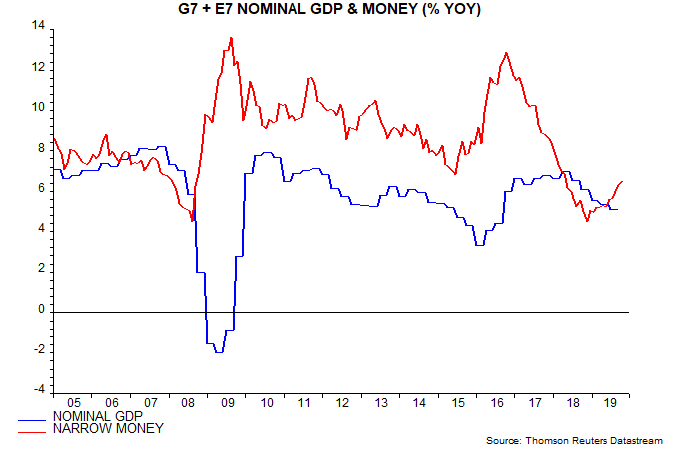
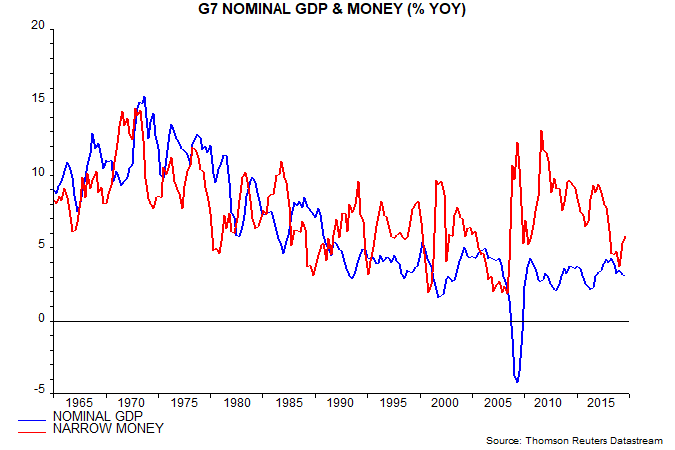
G7 plus E7 annual narrow money growth peaked in October 2016, falling significantly over the following two years to a low in November 2018. Nominal GDP growth peaked a year after the money growth peak in Q4 2017 and is estimated to have fallen further in Q3 2019, based on partial data – first chart.
Lows in money growth in January 2001, August 2008 and June 2016 preceded lows in nominal GDP growth by three quarters. The November 2018 money growth low, therefore, suggests that nominal GDP growth is at or near a trough and will revive during 2020.
The narrow money signal is supported by broad money trends: annual growth also bottomed in late 2018 and has risen towards the top of its post-GFC range – third chart. The leading relationship between broad money and nominal GDP broke down around the GFC as the collapse of the shadow banking system resulted in shadow assets / liabilities moving onto banks’ balance sheets, boosting conventionally-measured broad money aggregates.
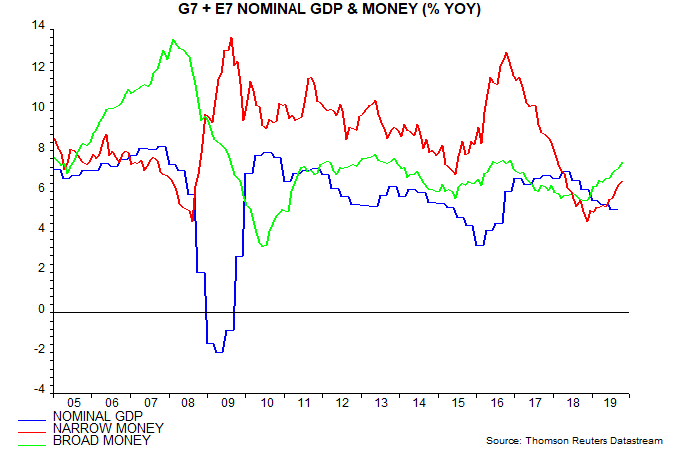
A recovery in nominal GDP growth would be expected to be reflected initially in real economic activity but inflation would follow if the pick-up were to be sustained. Recent money trends, that is, could be laying the foundation for a rise in inflation in 2021 and beyond. Such an increase would be consistent with the long-term Kondratieff price / inflation cycle.
Nikolai Kondratieff, a Russian economist, conducted research in the 1920s on long-term UK, French and US data on prices, interest rates, trade and production, and found evidence of long “waves” or cycles of around 50 years. Kondratieff argued that prices had reached long wave peaks in 1814, 1873 and 1920.
The breakdown of the gold standard in the 1930s and rapid monetary expansion during and after World War II resulted in a secular rise in the price level. The Kondratieff cycle, however, remained visible in rate of change data – fourth chart. The 1975 peak in PPI inflation rates occurred on schedule.
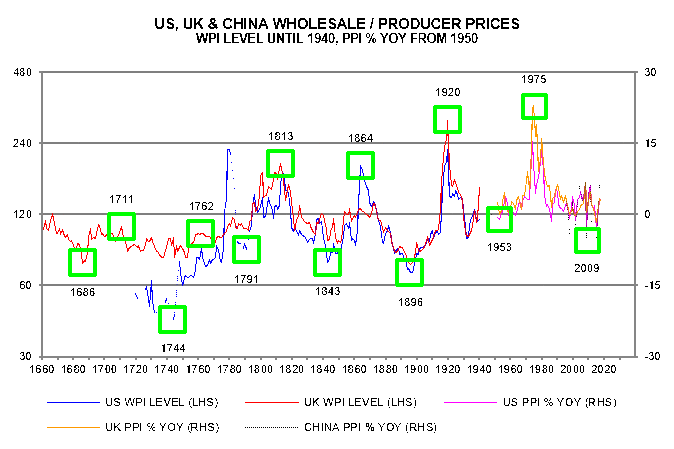
The average length of the cycle since the late 1600s (i.e. six complete cycles measured from trough to trough) has been 54 years. This suggests another peak around 2029.
Mainstream economists dismiss cycle analysis as the economics equivalent of astrology. There are, however, several reasons for taking seriously the possibility of a coming sustained inflationary upswing.
First, while unemployment rates are expected to rise near term, they are likely to peak well below previous cyclical highs. Wage pressures, therefore, could pick up strongly early in the next economic upswing. Deglobalisation implies less of an offset to domestic labour market tightening from cross-border flows of labour-intensive products and workers.
Secondly, banks are highly liquid and generally well-capitalised, suggesting that bank lending will grow much faster in the next upswing. Lacking other tools to stimulate activity, policy-makers will probably encourage this trend. A lending boom could create the monetary conditions for a sustained inflation rise.
Thirdly, policy defences against higher inflation are being dismantled. Lingering deflation concerns suggest that central banks will be slow to respond to any inflation pick-up. Meanwhile, a growing consensus in favour of fiscal expansion and “new” ideas such as Modern Monetary Theory raise the prospect of monetary financing of rising deficits.



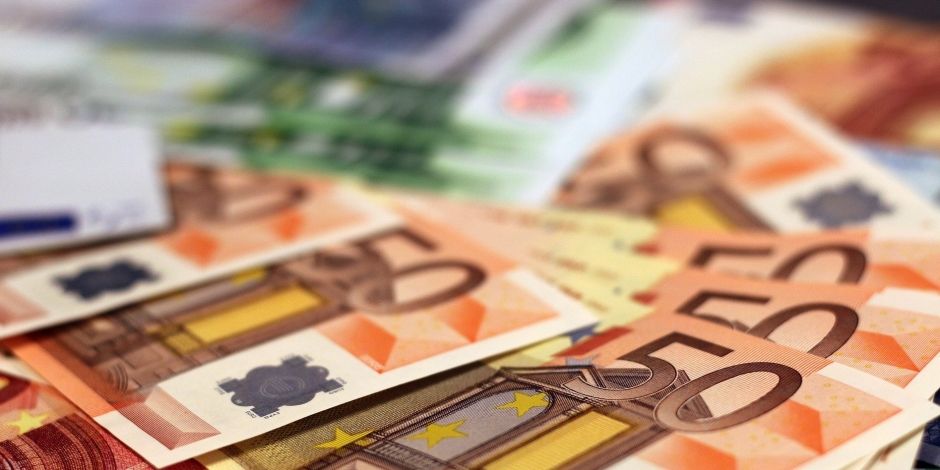
Diesen Beitrag teilen: